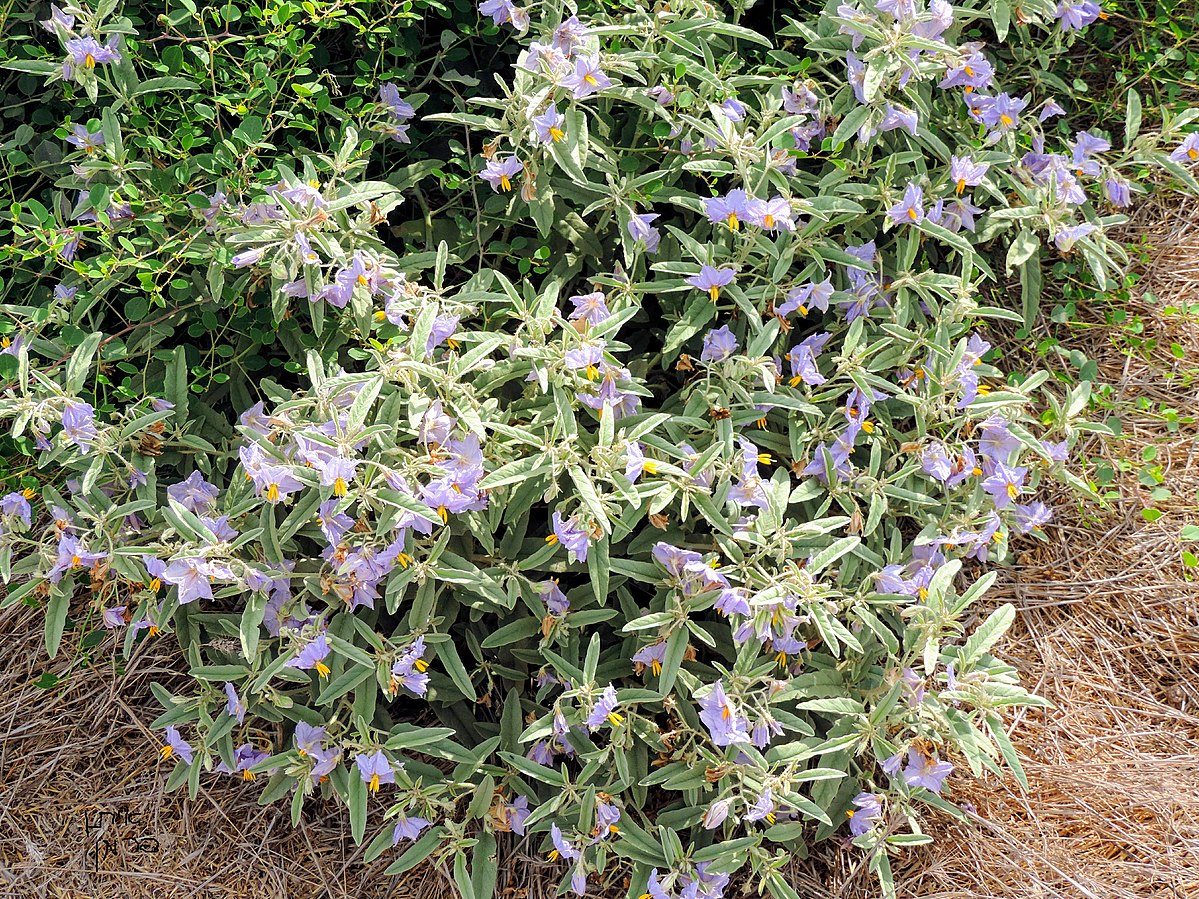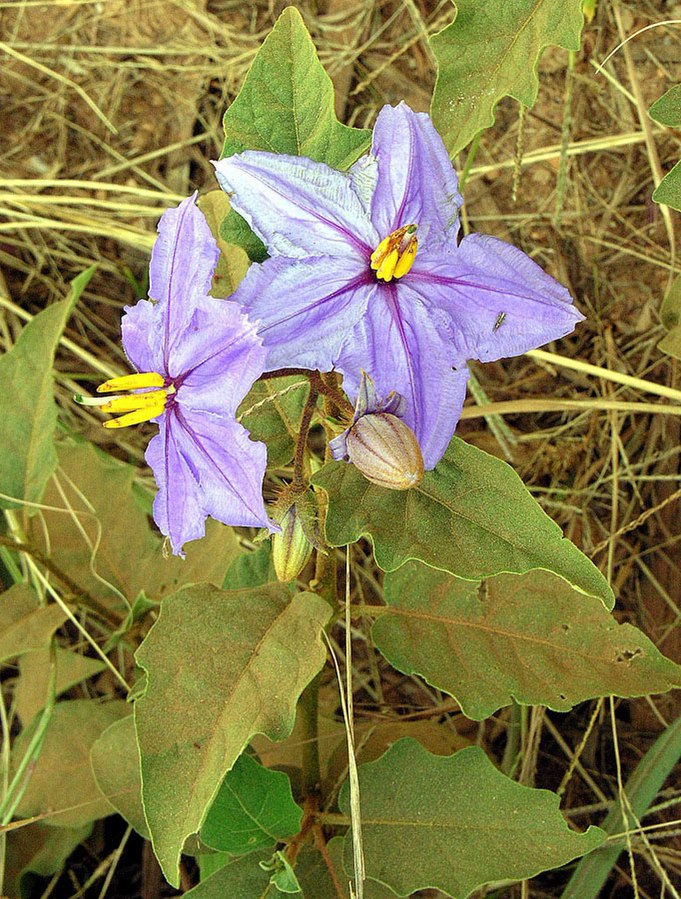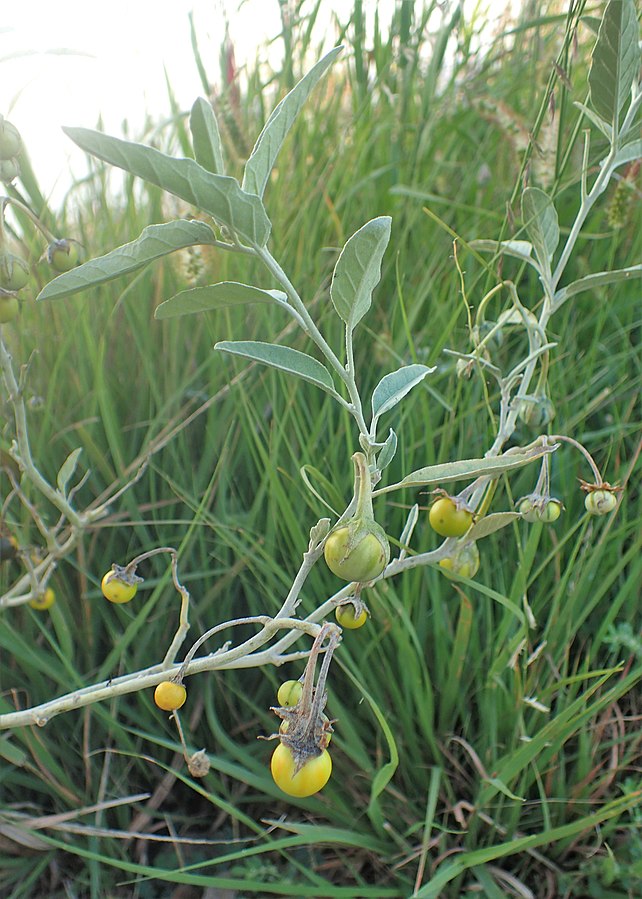Silverleaf Nightshade

Silverleaf Nightshade
(Solanum elaeagnifolium)
Priority: - Prevent / EDRR
Tags: Terrestrial | Toxic
Identification and Reproduction
Identification:
- Silverleaf nightshade is a perennial herb that grows from a tap-root to 30-60 cm tall.
- Stem is branching and covered in reddish, nettle-like prickles.
- Leaves are lance-shaped, up to 15 cm long and covered in hairs that give the plant the silvery appearance.
- Flowers are star-shaped and vary from blue, lavender or white. Flowers have 5 yellow stamens and a single pistil that form at the centre of the flower.
- Fruits are glossy yellow, orange or even red berries that brown last over-winter. They resemble small tomatoes.
Reproduction:
- Reproduce by seed and vegetatively through its roots.
- An infestation can produce up to 250 million seeds per hectare.
- Seeds remain viable for 10 years.
Habitat & Ecology
- This plant is well adapted to various habitat types.
- Thrives in dry sites with low precipitation rates.
- Has been observed on crop lands, roadsides, water furrows, riverbanks, rangelands and otehr disturbed sites.
- Currently, silverleaf nightshade is not found in Canada.
Impacts
Social:
- This plant outcompetes with crops: vegetables and cereals such as alfalfa, corn and wheat.
- Also exhibits allelopathic properties on some crop species.
- Reduces crop yields and contaminates harvests.
- Reduces foraging opportunities for wildlife.
- Some research has shown that this plant is toxic to cattle and horses. Observed to cause damage to digestive tract and nervous system.
Management
Prevention is a high priority for this species.
- Purchase certified and clean animal feed and seed mixtures.
- Do not transport, plant or distribute silverleaf nightshade plants or any propagative parts.
- Maintain healthy and diverse pastures.
- Clean equipment and vehicles of plant and soil matter before leaving a site to prevent accidental introduction.
- Contact your local Canadian Food Inspection Agency (CFIA) if you think you have seen this plant.
Resources
For more details check out the Invasive Species Compendium datasheet on Solanum elaeagnifolium (silverleaf nightshade).
CFIA also has a factsheet on silverleaf nightshade on further information on silverleaf nightshade.
Header photo (Harry Rose).





